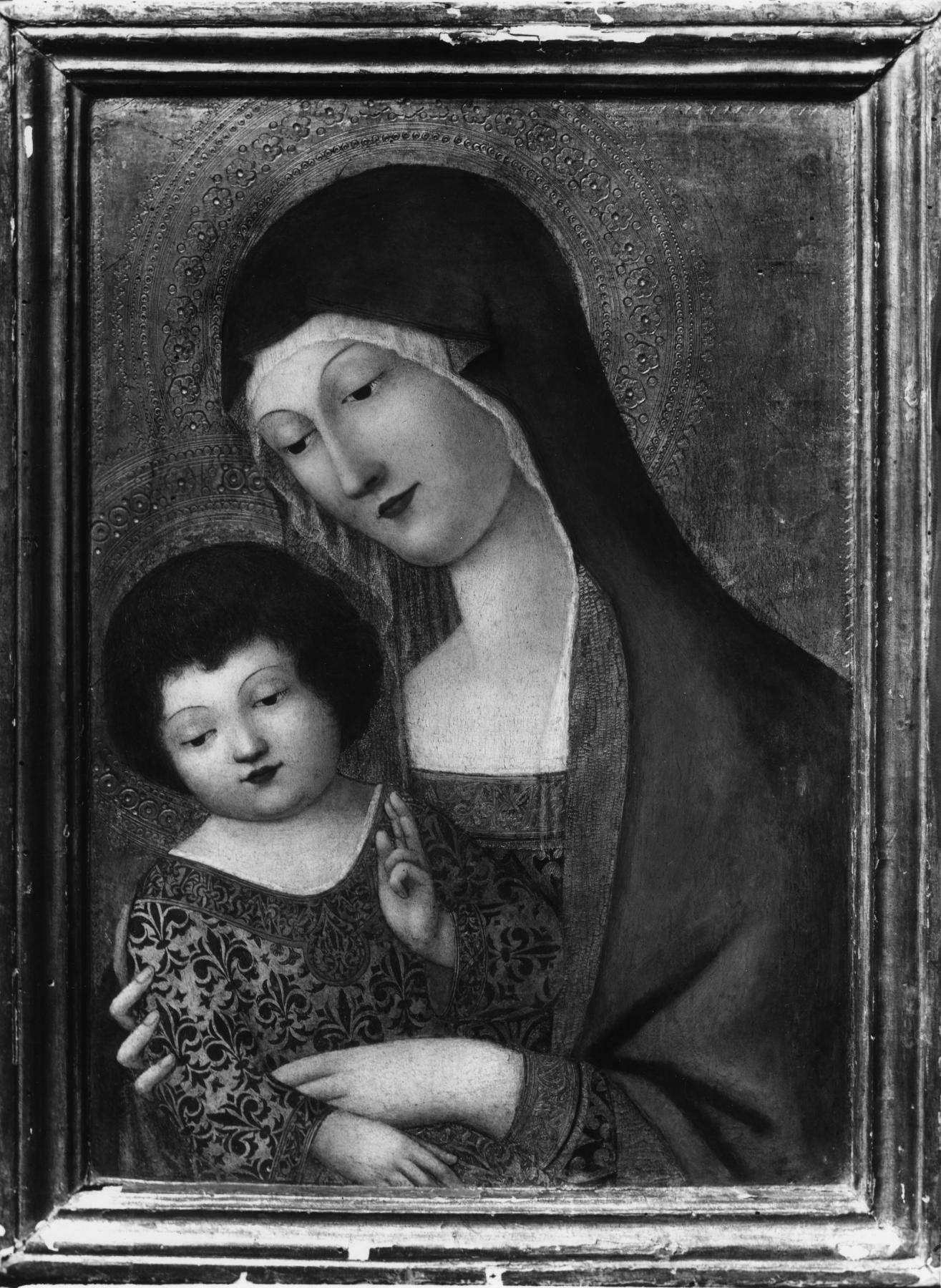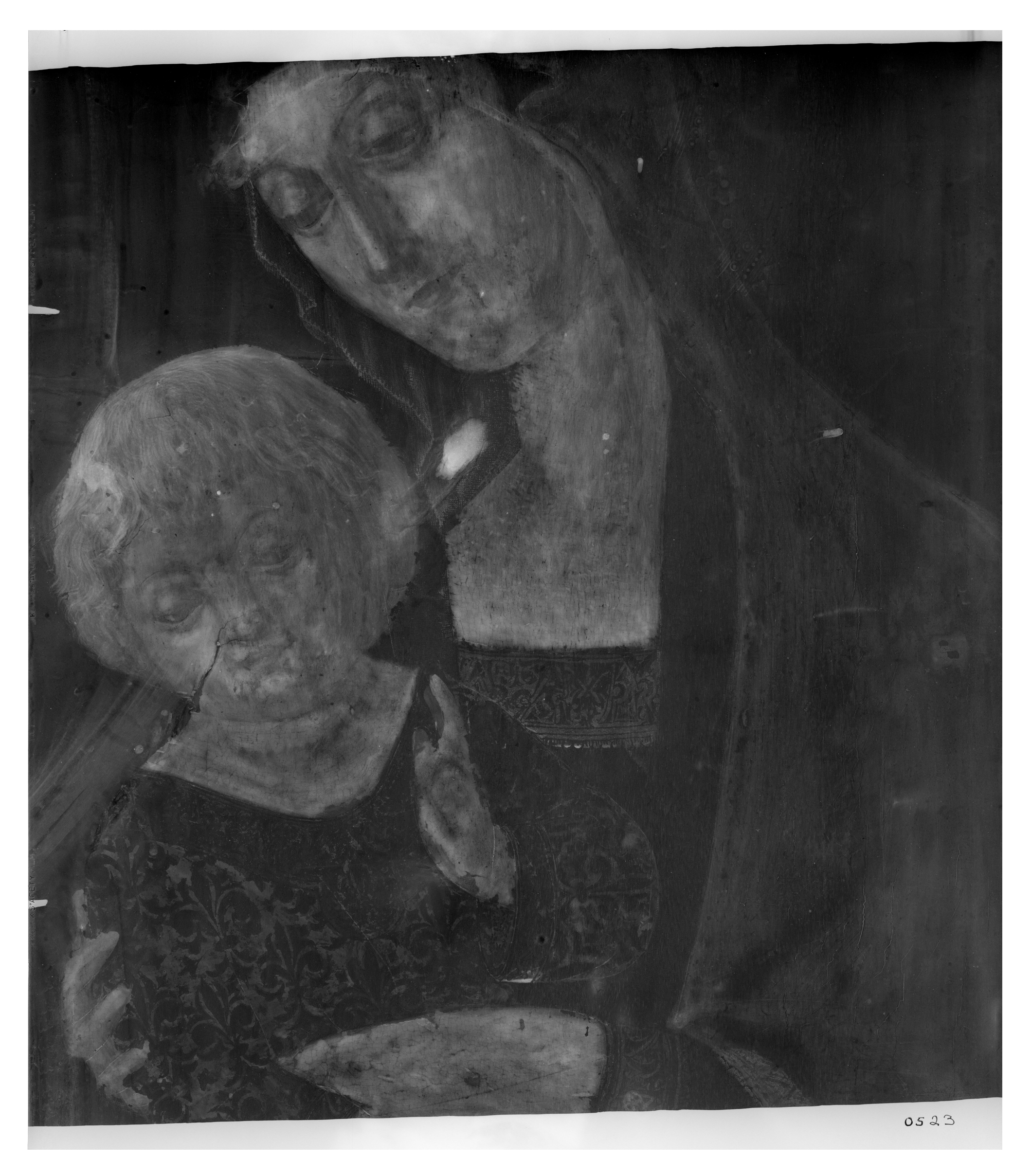Madonna and Child
(Renaissance Europe )
The Virgin Mary was considered the divine protector of the city Siena thanks to the popular belief that she guided the city to victory in a battle against its rival, Florence, in 1280. Images of the Madonna, often accompanied by the Christ Child, were therefore extremely popular in the homes of Sienese citizens, who viewed such images as expressions of devotion as well as civic pride. In this intimate example, still in its original engaged frame, the Madonna and Child glance downward as if seeking to engage the devotee who would have originally knelt in prayer before the picture. The Christ Child, wearing an elaborately patterned cloak, raises his hand in a gesture of blessing, acknowledging that the devotee’s prayers have been heard.
One of the greatest geniuses of Renaissance Siena, Francesco di Giorgio was active not only as a painter but also a sculptor, architect, and engineer. One of the artist’s few surviving small-scale works, this panel shows Francesco sacrificing innovation for tradition by placing the Madonna and Child against a flat gold background. In the 1470s, gold backgrounds had largely gone out of fashion in other Italian cities (like Florence) but they remained popular in Siena, where they brought to mind the paintings from the city’s artistic “Golden Age” of the late 1300s, when gold backgrounds were ever-present.
Provenance
Provenance (from the French provenir, 'to come from/forth') is the chronology of the ownership, custody, or location of a historical object. Learn more about provenance at the Walters.
Arnold Seligman, Rey & Company [date and mode of acquisition unknown]; Henry Walters, Baltimore, 1920 [mode of acquisition unknown]; Walters Art Museum, 1931, by bequest.
Conservation
| Date | Description | Narrative |
|---|---|---|
| 1/5/1959 | Examination | examined for condition |
| 11/5/1964 | Treatment | cleaned; other |
| 11/5/1964 | Technical Report | examined for technical study |
| 3/5/1973 | Treatment | cleaned; loss compensation; coated |
Geographies
Italy, Siena (Place of Origin)
Measurements
Panel H including added strip on left side: 24 1/8 x W: 17 1/4 x D: 1 1/4 in. (61.3 x 43.8 x 3.2 cm); Added strip W: 1 in. (2.5 cm)
Credit Line
Acquired by Henry Walters, 1920
Location in Museum
Not on view
Accession Number
In libraries, galleries, museums, and archives, an accession number is a unique identifier assigned to each object in the collection.
In libraries, galleries, museums, and archives, an accession number is a unique identifier assigned to each object in the collection.
37.1034




